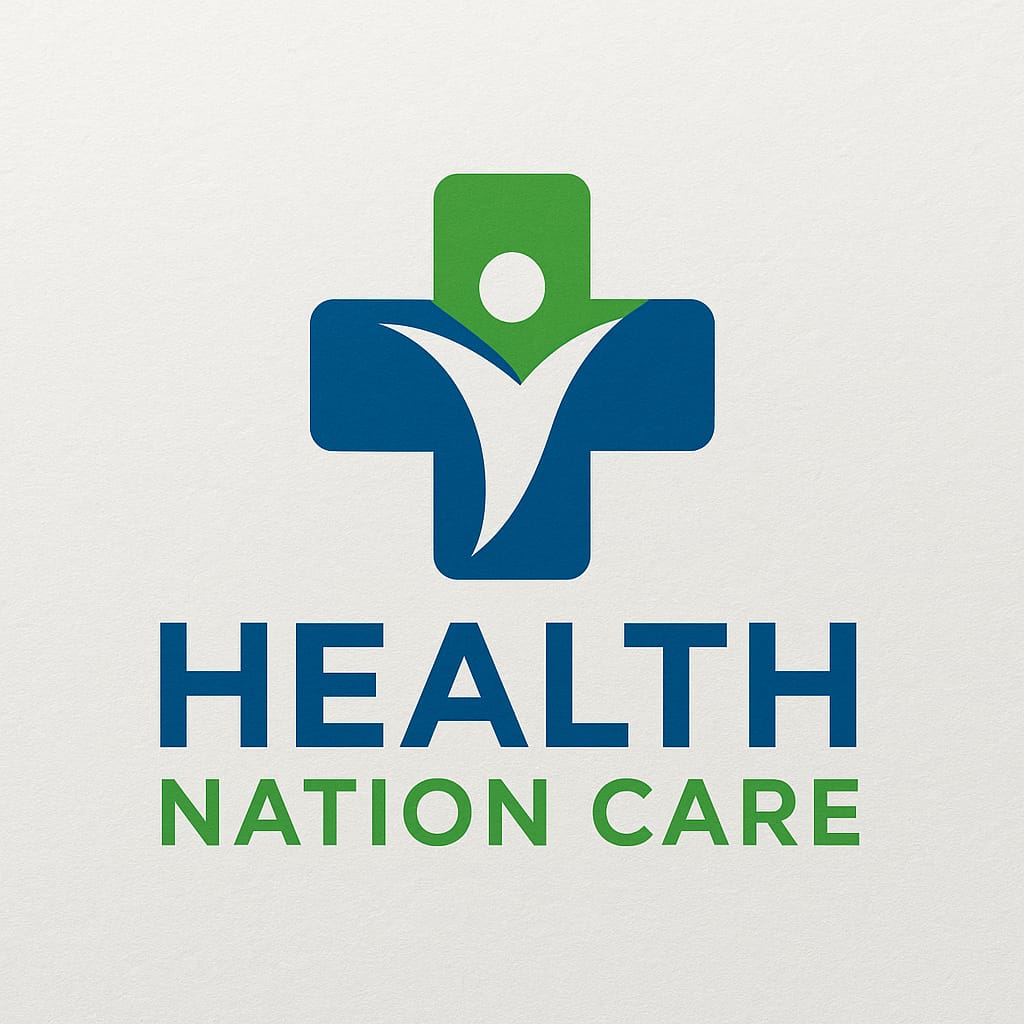Understanding the Shift in Modern Healthcare
In 2025, the connection between technology and health has reached an entirely new level. The global healthcare industry is no longer relying solely on hospitals and clinics it is evolving through digital ecosystems powered by artificial intelligence (AI), data-driven insights, and wearable devices. These innovations are helping doctors predict illnesses earlier, patients monitor their health in real time, and healthcare providers deliver more efficient, accessible care.
From AI-powered diagnostics to wearable health monitors, technology is now the bridge between human intelligence and medical precision. What makes 2025 stand out is not just new devices but how machine learning, predictive analytics, and Internet of Things (IoT) are making healthcare more proactive rather than reactive.
1. Artificial Intelligence: The Brain Behind Smart Healthcare
AI has become one of the most transformative forces in healthcare. Its ability to process massive datasets, detect hidden patterns, and support clinical decisions is reshaping diagnostics and treatment planning.
Hospitals are now using AI algorithms to detect cancer, heart disease, and neurological conditions with accuracy that rivals top specialists. Machine learning models analyze medical images, lab results, and even patient histories to provide instant insights. This not only reduces diagnostic errors but also accelerates treatment.
AI chatbots and virtual health assistants are becoming trusted digital partners for patients, helping them track symptoms, manage medications, and schedule appointments. In 2025, these systems will become more conversational and empathetic, reflecting the progress of large language models (LLMs) in healthcare communication.
2. Predictive Analytics: From Treatment to Prevention
Predictive analytics is one of the most valuable trends in health technology. By analyzing real-time patient data, health apps can now predict disease risk long before symptoms appear.
For example, smart platforms collect data from wearables such as heart rate, sleep, oxygen levels, and physical activity and use AI to identify anomalies. If an individual’s heart rhythm changes or their stress levels spike, alerts are sent directly to healthcare providers for timely intervention.
This proactive approach is saving lives, reducing hospital readmissions, and enabling early prevention. Predictive tools are also helping researchers design personalized treatment plans tailored to genetic and lifestyle factors, aligning with the rise of precision medicine.
3. The Rise of Wearable Devices in 2025
Wearable technology has moved beyond fitness tracking. In 2025, devices such as smartwatches, biosensors, and health patches will continuously monitor vital signs and share data securely with healthcare systems.
These devices now track more than steps; they measure blood oxygen, glucose levels, blood pressure, and even emotional states. For individuals managing chronic diseases like diabetes or hypertension, real-time monitoring allows immediate action and improved quality of life.
Wearable health devices also promote accountability. Patients become more aware of their habits, leading to better sleep, diet, and mental well-being. Hospitals are increasingly using wearables for remote patient monitoring, especially for post-surgery care and long-term conditions.
4. Telemedicine: Expanding Access to Care
Telemedicine has evolved from a pandemic necessity into a permanent healthcare solution. In 2025, virtual consultations, remote diagnostics, and AI-supported telehealth systems will help patients access specialists from any location.
Through secure video platforms, doctors can review symptoms, prescribe treatments, and monitor recovery, reducing waiting times and healthcare costs. For rural and underserved regions, telemedicine bridges the gap between patients and professionals, ensuring no one is left behind.
Combined with wearable data and AI insights, telemedicine allows for continuous care, where doctors can make real-time adjustments to treatment plans based on ongoing monitoring.
5. Internet of Medical Things (IoMT) and Connected Care
The Internet of Medical Things (IoMT) refers to the network of connected devices that share data between patients, healthcare providers, and systems. These interconnected tools create a smart healthcare ecosystem, ensuring accurate, secure, and fast communication.
In hospitals, IoMT-enabled equipment tracks patient vitals and sends data directly to digital dashboards, allowing staff to respond instantly to emergencies. For home care, IoMT devices allow seniors to live independently while healthcare providers monitor them remotely.
However, as the number of connected devices increases, so does the need for data security. Healthcare organizations are adopting blockchain and cloud encryption to protect sensitive patient data and ensure compliance with international health privacy standards.
6. Personalized and Precision Medicine
One of the most promising advancements is personalized medicine, the practice of tailoring treatments to each person’s unique genetic and biological profile. With AI, doctors can now identify how specific medications will affect individuals, leading to safer and more effective therapies.
Genomic sequencing technologies are becoming faster and more affordable, allowing medical professionals to predict disease risks and customize care accordingly. This evolution aligns perfectly with patient-centered healthcare, where decisions are made based on individual needs, not general assumptions.
7. Virtual Reality (VR) and Augmented Reality (AR) in Healthcare
Virtual reality and augmented reality are transforming medical education, surgery, and therapy. Surgeons now train on 3D virtual models before operating, reducing errors and improving confidence.
Patients undergoing rehabilitation or mental health therapy benefit from immersive experiences that help manage pain, reduce anxiety, and enhance motor recovery. In medical education, VR-based simulations allow students to practice real-life scenarios safely and repeatedly.
These technologies are no longer futuristic; they are practical, evidence-based tools that improve outcomes today.
8. Data Security and Ethical Use of Health Technology
While technology makes healthcare smarter, it also raises concerns about data privacy, AI ethics, and algorithmic transparency. As more patient data is stored and analyzed, ensuring confidentiality is critical.
In 2025, Health National Care providers are implementing zero-trust cybersecurity frameworks, multi-factor authentication, and ethical AI principles. Transparency in how data is used builds trust, a key factor in EEAT (Expertise, Experience, Authoritativeness, Trustworthiness) metrics that Google values for ranking health-related content.
9. The Future of Health Technology Beyond 2025
The future holds even deeper integration between humans and machines. Neural interfaces, bioprinting, and AI-driven mental health support are emerging frontiers. The goal is to create healthcare that not only treats but also predicts, prevents, and personalizes care for every individual.
In this next era, collaboration between engineers, data scientists, and healthcare professionals will be the foundation of innovation. The focus will remain on human outcomes, ensuring that every digital tool enhances empathy, accuracy, and accessibility in medicine.
FAQs
Q1. What are the top health technology trends in 2025?
AI-driven diagnostics, wearable devices, telemedicine, predictive analytics, and personalized medicine are leading trends improving patient care.
Q2. How are wearable devices changing healthcare?
Wearables continuously track vital signs, detect irregularities, and send real-time data to healthcare providers for early intervention.
Q3. What role does AI play in modern medicine?
AI assists in diagnostics, drug discovery, image analysis, and decision-making, reducing human error and speeding up patient care.
Q4. Why is data security crucial in health technology?
Because healthcare systems manage sensitive personal data, ensuring encryption and compliance prevents breaches and protects patient trust.
Q5. What is the next big thing after wearable devices and AI in healthcare?
Emerging technologies like neural interfaces, genomics, and bioprinting are expected to define the next generation of healthcare innovation.




Health Nation Care is a trusted wellness blog dedicated to delivering insightful, evidence-based
articles on health, fitness, nutrition, and mental well-being. We strive to simplify complex medical topics and bring practical, up-to-date
advice to help readers lead healthier lives.